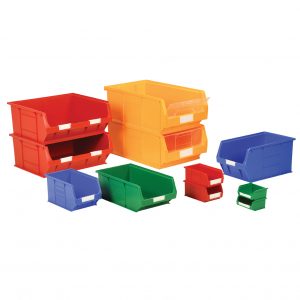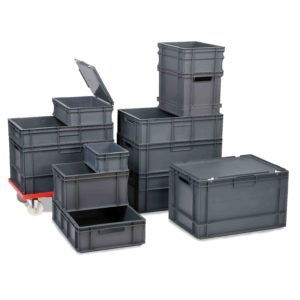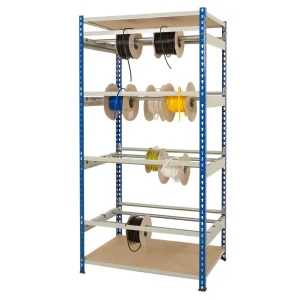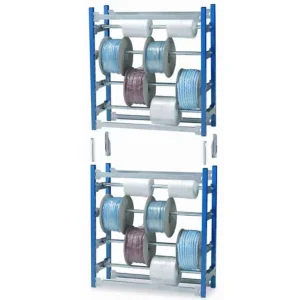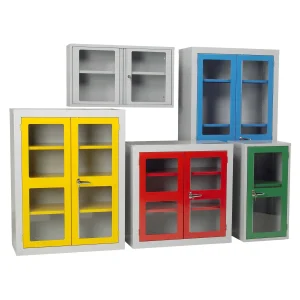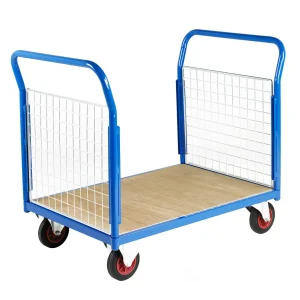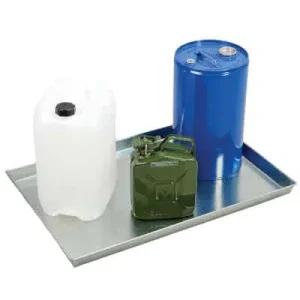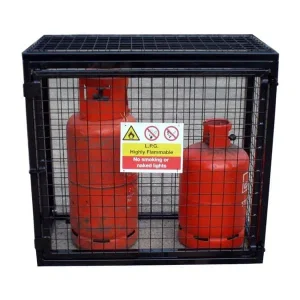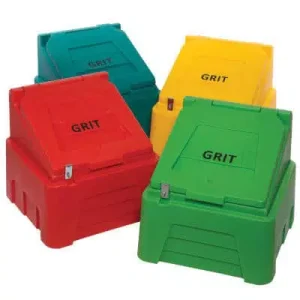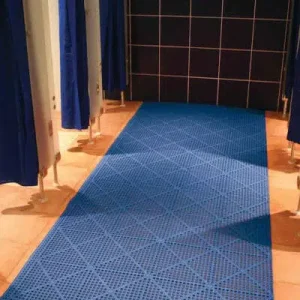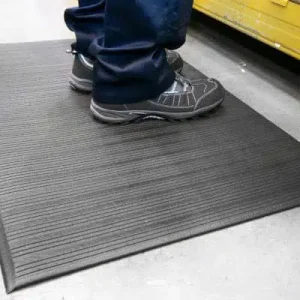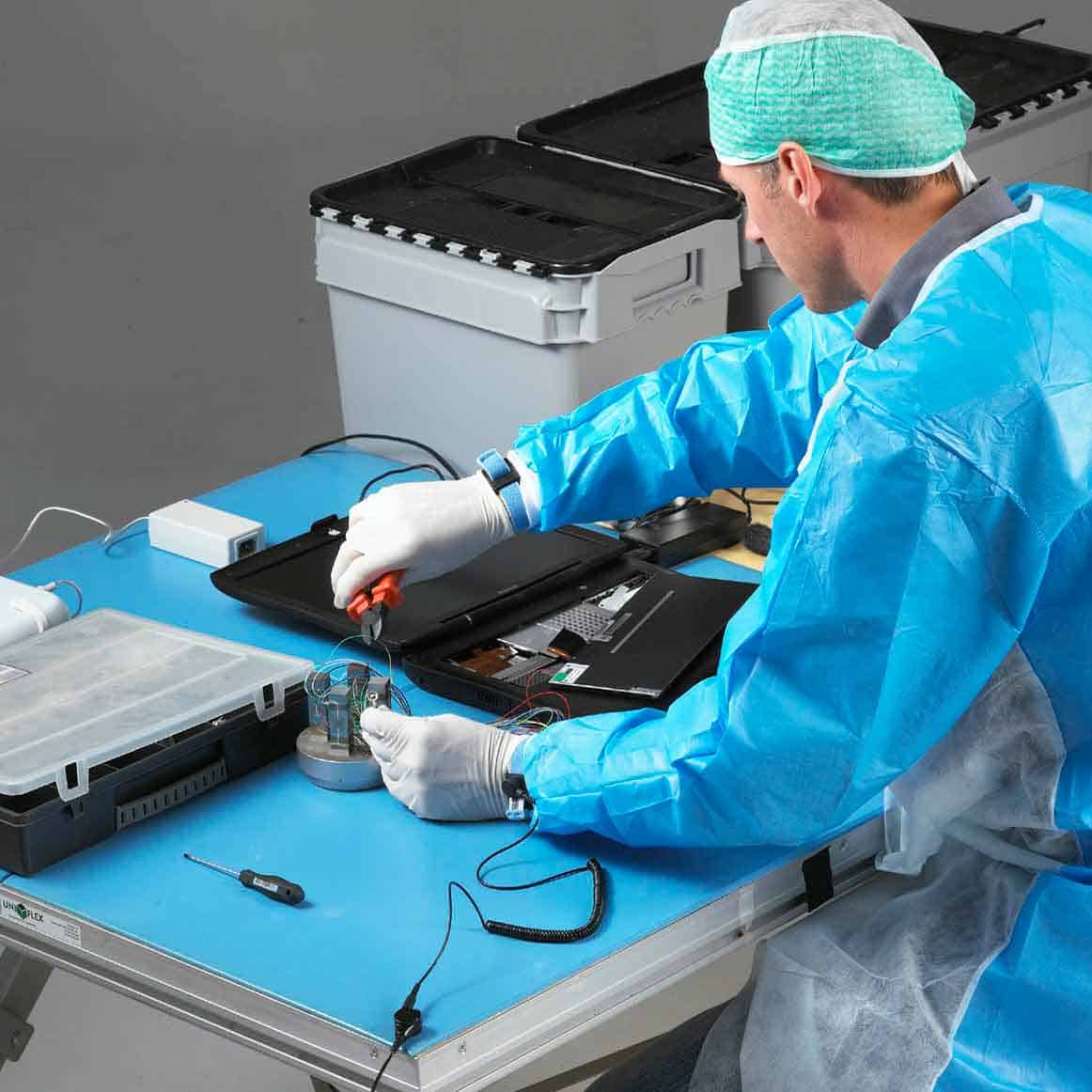
ESD stands for ‘Electrostatic Discharge’, and these mats are designed to protect electronic equipment from damage as a result of electrostatic discharge. They are most often made from conductive materials such as vinyl or rubber, as these will efficiently and reliably dissipate excess static electricity, and come in a wide range of sizes and styles.
What Are ESD Mats?
ESD mats are most commonly used in industries that handle a lot of sensitive electronic materials, such as electronics manufacturing and construction, and they are essential for maintaining steady compliance with health & safety regulations.
In order to properly implement ESD mats in your workplace, you must first get to know how they work and where they work best. In this guide, we will take you through all the components that make up a functional ESD mat, using our range as an example, in order to heighten your understanding and ensure their proper use at work or on-site.
How Do ESD Mats Work So Well?
There are several types of ESD mats, including bench mats and floor mats, each providing a different level of electrical dissipation, and suited to specific kinds of environments and implementations. How they work lies in their composition, which can be:
- Solid: Also known as ‘homogenous’, these mats can be made from rubber and vinyl, and consist of one layer, made from the same polymer-based material. They provide a good level of electrical performance.
- Two-Layer: This mat provides a good level of electrical performance and is a cost-effective option. With a foam layer for added comfort underfoot and a top layer of rubber or vinyl for optimal conductivity.
- Three-Layer: Similar to the two-layer mats, but with an additional section, consisting of a conductive carbon or metal layer beneath a top layer of vinyl. Like two-layer mats, the three-layer variations also include a layer of foam to provide cushioning while in use.
How Is ESD Performance Measured?
The electrical performance of ESD mats can be measured in one of three ways:
- Resistance to Ground (RTG) – The most common form of measurement. RTG calculates the resistance between the heaviest portion of the mat and the ground.
- Resistance to Groundable Point (RTGP) – Functioning similarly to RTG, but measuring the resistance between the grounding point of a surface and one point on the mat.
- Resistance Point to Point (RTP) – This measures the surface resistance between the ESD mat’s surface and a solid point ten inches from it.
Our Range of ESD Mats
We have a select range of ESD mats available, for use in a number of settings and work environments. The range includes:
Electrical Safety ESD Matting
Our standard ESD matting can be used in both commercial and domestic settings, as well as industrial environments. They are homogenous mats, made from one 6mm-thick rubber layer, perfect for reliable conductivity and electrical dissipation.
Pebble Anti-Fatigue ESD Matting
This vinyl sponge matting is perfect for a number of applications, both professional and personal. The added comfort that the foam provides makes it ideal for use in assembly lines, as well as computer rooms and other work environments that have workers standing for long periods of time.
Tough Anti-Fatigue ESD Matting
Made from PVC (Polyvinyl Chloride), which is brilliant for conducting excess static down and away from workers and sensitive equipment, these mats also include a microcellular PVC sponge base to boost comfort, and flecked texturing to improve grip.
Worktop ESD Matting
Light and easy to clean, our worktop ESD matting can be cut to fit your workspace and comes in an attractive blue vinyl, designed for use over work surfaces. This matting will ensure conductive items resist damage from both static and abrasion.
Free samples are available on request.
ESD Matting Accessories
As well as a complete range of ESD mats for use in a number of industries, we also provide various additional accessories to add an extra layer of safety and ease to the use of your chosen ESD matting.
The range includes a wristband and heel grounder to maintain a safe connection while working, a mat cleaner to boost dissipation capabilities, and earth bonding plugs which can connect and ground up to three separate cords.
